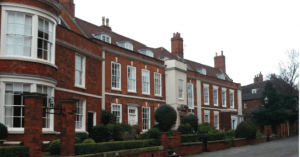Save Our Streets

 The Save Our Streets Campaign initiated by English Heritage aims to return the nation’s streets to their former glory. It does this by protecting them from needless street furniture, which blights the sight of local landmarks and destroys the individual character of an area.
The Save Our Streets Campaign initiated by English Heritage aims to return the nation’s streets to their former glory. It does this by protecting them from needless street furniture, which blights the sight of local landmarks and destroys the individual character of an area.
Clive Fletcher, Historic Areas Advisor for English Heritage, believes that the need to protect the nations streets has never been more timely.
“In recent years there has been a great deal of concern about the state of towns and cities – it really has been a wake up call to the British public and to those who preserve the nation’s heritage that we could lose it all.”
Launched over ten years ago, the scheme was initially a London based programme. It was intended to solve some of the aesthetic problems caused by the lack of consistency amongst the several Borough and Town Councils in the city.
Clive notes that: “The streets really were a disgrace, chaos was caused by the proliferation of road traffic signs which were blocking historic buildings and landmarks. There was also a mis-match patchwork of pavements and barriers designed to protect pedestrians which weren’t really required.”
“That’s where the Save Our Streets campaign, then the Streets For All Campaign, came in. It was entirely designed to stop this huge amount of clutter and re-invent London so that it could be appreciated fully.”
“It allows people who are concerned about their streets to start to make their own observations”
One of the biggest challenges English Heritage faced was getting people to see that some of the safety measures put in place to protect the pedestrian weren’t necessary and were simply adding clutter to the streets.
“Management of streets is one of those things which is done by engineers and there is a certain amount of risk aversion which results in intrusive safety measures coming in. Research underpinned our belief that assertions on things like barriers were of ten unnecessary – it’s all about constantly pushing to show the problems in the design process.”
As a result, the Department of Transport looked in a more enlightened way at combining traffic with pedestrians – forming the beginning of the current thinking and wisdom on the design of streets and traffic management.
Clive says, “They re-adjusted the priority of pedestrians to work with the traffic. Although it is not a new phenomenon, this goes against what has been happening in the UK for years, where places have been wholly pedestrianised whilst concentrating traffic in busy ring roads.”
“But, the idea with this approach, is to see urban whelm of traffic regulated the same as you would else where… The basis is that the existence of traffic should not spoil our enjoyment of towns.”
“I think many people have walked down a street thinking ‘that looks shabby’ and have no understanding why or what could be done about it.”
The success of this campaign saw it re -launch four years ago as a nationwide project. This encouraged the public and communities to get involved by actively conducting street audits and lobbying their council on behalf of English Heritage.
These actions were encouraged by the Government, who wanted to tap into the general public’s enthusiasm for their area, something which Clive says proved to be immensely popular.
“It allows people who are concerned about their streets to start to make their own observations and it certainly gives legitimacy to the concerns they may have. It has definitely been a popular campaign in that respect.”
The regional basis has meant that English Heritage has been able to target specific areas, concentrating on certain local land marks and regional distinctions and allowing residents to drastically improve the surroundings in which they live.
“I think many people have walked down a street thinking ‘that looks shabby’ and have no understanding why or what could be done about it. So it is absolutely about trying to show the public what can be easily achieved with some imagination.”
But Clive says that the scheme doesn’t only improve the aesthetics of an area. It also act s as a ke y to improving communities and cultural values, especially insignificant historical sites.
“These buildings are a part of our life that we don’t have to make an effort to go and see, they are all around us”
“The setting is critical to how we appreciate buildings. If the settings are a wreck the contribution those buildings make to the public and society is greatly diminished. These buildings are a part of our life that we don’t have to make an effort to go and see. They are all around us, whether they are potentially significant or historically important.”
“If your enjoyment is spoilt by having signs outside or huge pedestrian barriers and all the rest of it that makes places look messy, then the cultural contribution that they make gets diminished because we appreciate them less.”
The Listed Building Act 1990, states that a special regard has to be given to preserving the setting of conservation areas and historic buildings. But Clive says this should not be a reason to settle for a lower quality and standards in our streets.
“The law says we must preserve and enhance, but it is limited by highway advances such as pavement and road allocation.”
“But it is possible to design beautiful streets – the continent has shown us this and they have even enhanced safety for the public. For us not to follow suit it is a massive loss as it impoverishes us all of experiencing something special… It is something which we all share ownership of and something we should strive to achieve.”